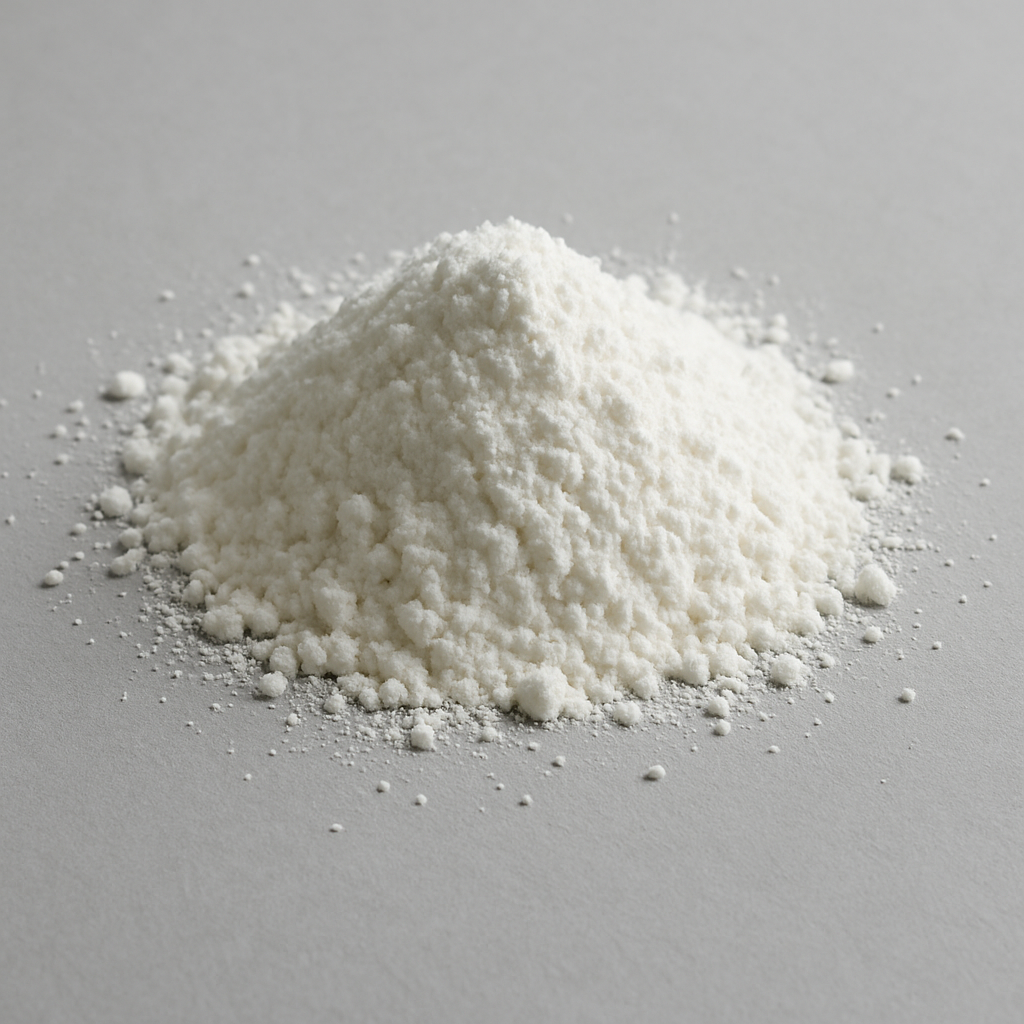Calcium Oxide Powder (CaO)
Introduction
Calcium Oxide Powder (CaO), commonly known as quicklime, is a fundamental inorganic material with wide applications in construction, metallurgy, chemicals, and environmental engineering. With its strong alkalinity, high reactivity, and thermal stability, CaO is indispensable in cement production, steel refining, wastewater treatment, and flue gas desulfurization.
Detailed Description
Calcium Oxide is a fine, white to grayish powder with a melting point of ~2,572 °C and a density of ~3.34 g/cm³. It is typically produced by calcination of limestone (CaCO₃) at high temperatures, driving off CO₂ and yielding reactive CaO.
Key features include:
Strong alkalinity: Reacts vigorously with water (exothermic) to form calcium hydroxide (slaked lime).
Thermal stability: Resistant to decomposition at high temperatures.
Versatility: Serves as a flux, reactant, and stabilizer in multiple industries.
Environmental utility: Effective in neutralizing acidic gases and wastewater pollutants.
Applications
Calcium Oxide Powder is widely used in:
Construction: Production of cement, lime mortar, and plaster.
Metallurgy: Acts as a flux in steelmaking and non-ferrous metal refining.
Environmental protection: Used in flue gas desulfurization, wastewater neutralization, and soil stabilization.
Chemicals: Precursor for calcium hydroxide, calcium carbide, and other calcium compounds.
Paper & Pulp: Plays a role in alkali recovery and chemical pulping processes.
Technical Parameters
| Parameter | Typical Value / Range | Importance |
|---|---|---|
| Purity | 95% – 99.99% | Higher purity ensures efficiency in industrial processes |
| Particle Size | 1 µm – 200 µm | Finer powders enhance reactivity and uniform mixing |
| Appearance | White/grayish powder | Color depends on raw material and process |
| Melting Point | ~2,572 °C | Suitable for high-temperature applications |
| Density | ~3.34 g/cm³ | Relevant for refractory and structural uses |
Comparison with Related Materials
| Material | Key Advantage | Typical Application |
|---|---|---|
| Calcium Oxide (CaO) | Strong alkalinity, reactivity | Cement, desulfurization |
| Magnesium Oxide (MgO) | High refractory strength | Furnace linings, ceramics |
| Aluminum Oxide (Al₂O₃) | Hardness, wear resistance | Abrasives, structural ceramics |
FAQ
| Question | Answer |
|---|---|
| What happens when CaO reacts with water? | It forms calcium hydroxide (slaked lime) with significant heat release. |
| Is CaO safe to handle? | It is caustic and requires protective gear (gloves, goggles, mask). |
| What purity levels are available? | Industrial grade (95–97%) and high-purity grade (≥99%). |
| Can CaO be used for environmental treatment? | Yes, it is widely used for flue gas desulfurization and wastewater neutralization. |
| How is CaO packaged? | Sealed bags, drums, or bulk containers to prevent reaction with moisture. |
Packaging
Calcium Oxide Powder is packaged in moisture-proof bags or drums due to its high reactivity with water. For large-scale use, bulk containers with protective liners are provided to maintain quality during transport and storage.
Conclusion
Calcium Oxide Powder (CaO) is an essential industrial material combining alkalinity, thermal stability, and versatility. From cement and steelmaking to environmental protection and chemical synthesis, it plays a vital role across global industries.
For detailed specifications and a quotation, please contact us at [sales@thinfilmmaterials.com].





Reviews
There are no reviews yet.